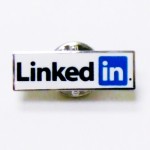“How do I sell my stuff without sounding sleazy?’
This seems to be the question du jour. But c’mon everyone: relax. Before you think you need to turn to a life of ill repute with clients who go by number instead of by name, get schooled by Felicia Spahr. In another joyous perk due to both the work I do now and social media, Fel and I crossed paths and I’m mesmerized by her writing prowess. Felicia is a pro copywriter, teacher, and lover of people. Dedicated to discovery and the power of words, she is on a mission to shake the world with tectonic-plate-shifting communication.
We sat down to talk about killer messaging, sales page copy magic and how to write emails that get noticed.
RS: You’re kind of a sales page genius. What are 3 tips readers can implement right now to improve messaging on their sales pages?
FS: Tip #1: For the love of god, stay away from trying to sound clever. Why? Clever is confusing. Simple language that your right people can understand and grasp onto is what sells.
Tip #2: As my boy Einstein said, “If I had an hour to solve a problem I’d spend 55 minutes thinking about the problem and 5 minutes thinking about solutions.” What does that translate to for you? Spend most of your time understanding the needs, wants, and problems of your customers before you go writing a sales page. Once you have enough information and can sense patterns and recurring problems (related to your service or product), the sales page will pretty much write itself.
Tip #3: You are a HUMAN, not a selling machine, right? J A big part of why we feel kooky and weird about selling ourselves (let alone writing sales pages) is because we associate selling with car salesman, in-your-face headlines, B.S., and cheap promises.
Selling is one of the most beautiful things you can do. When you’re writing your sales page, let your people know that you truly understand them—which translates to your ‘why’. Your why has gotta be in there or you’ve just got bullet points of deliverables and a lackadaisical emotional connection. Simon Sinek’s TED talk, ‘Start With Why’, is a great way to spend 18 minutes of your time drilling that idea into your beautiful head and adopting that mindset for life.
RS: What is your best tip for sending email to a busy big shot you don’t know – if you would like a book testimonial, interview or simply to say “You are my hero”?
FS: The very simple trick is this: Make it 99% about them—mention only a VERY small-sized lick about who you are. The biggest mistake I see people making is: “Hi, I’m Joe, and I’ve been featured here, here, and here and I’ve worked with x, x, and x, and you should be impressed! Read on to find out more about what I want from you.”
Instead, here are some examples of questions (that work) to use that are customizable, riff-able, and personality-injectable:
For an interview: The information about [topic they love] you talk about would be an invaluable resource for my readers because [specific reason—what might your readers need help with?]. Would you mind if I interviewed you and asked you [#] questions on [very specific topic]?
For a book testimonial: After reading [x, x, and x—show that you care about them and their work] about you, it seems like this topic is one you enjoy immensely. Do you think reading my book would be useful for you, and if it is, would you mind endorsing it?
For ‘You’re my hero’: Be extremely specific about what resonates with you about them, and then you can swoop in with your question with something like this:
I thought I might ask you a question that you could provide a unique perspective on [Insert why you’re thinking about this—and why them.]
The question I wanted to ask is: Your delight-inducing question here.
RS: What brand messaging mistakes on small business websites drive you up a wall? How can we avoid them?
FS: Copying other people’s words. I can’t tell you how many times I’ve looked at sites and have seen the exact same, inexplicable wording (especially in the life coach space: create the life of your dreams!) that really doesn’t mean anything. Same goes for ‘creative business’. What. Does. That. MEAN.
Think about your differentiating value factor—your unique perspective. You have one! Let’s be honest—the concepts of our ideas are not original. It’s how you spin it, position it, and package it. And you don’t have to be a sharp, clever, or witty wordsmith to express it—just very specific. Remember, you’re a person. Talk to me like I’m your really good friend or mentor whose opinion you take seriously.
And remember: No one can mess with your messaging if no one else can say it like you. (Tweet this!)
2017 UPDATE: Unfortunately, Fel is no longer doing copywriting projects but this advice is still golden! You can find out about what she’s up to now here.
Got a burning copywriting or promo plan messaging question? Please share it in the Comments below and Felicia and I will gladly answer!



